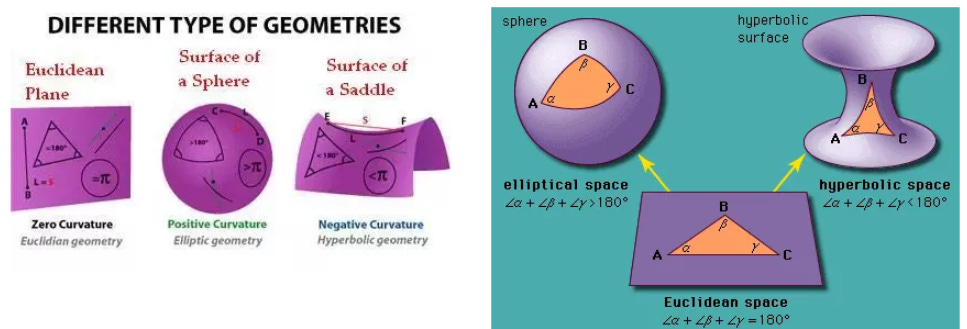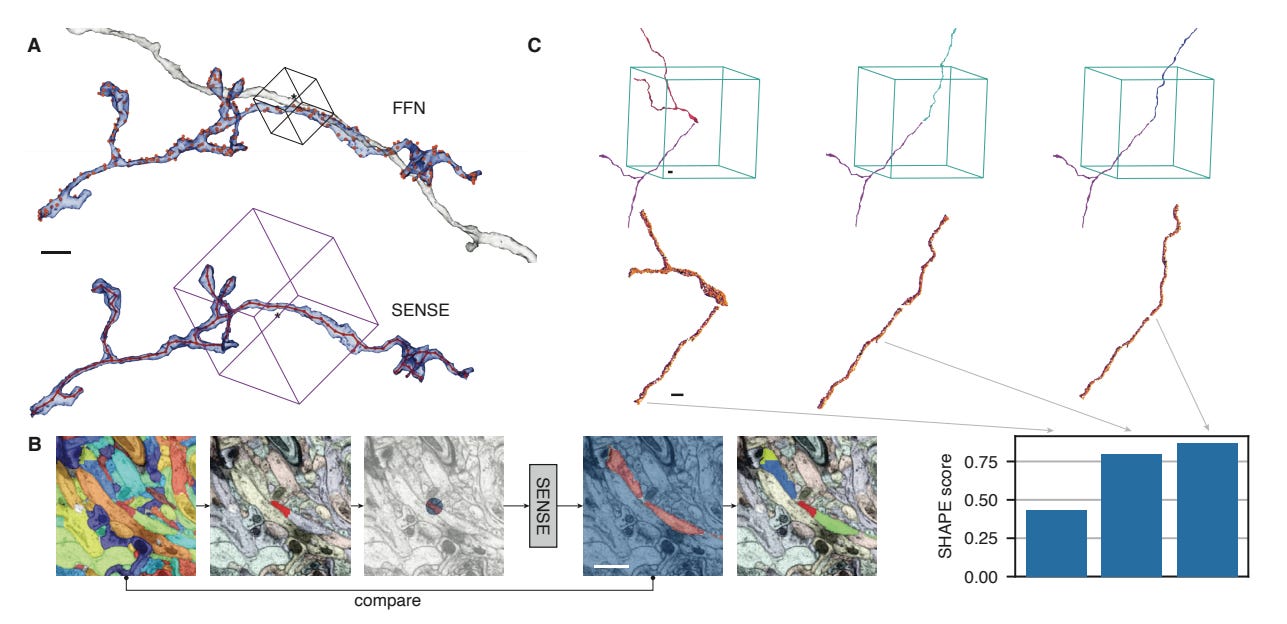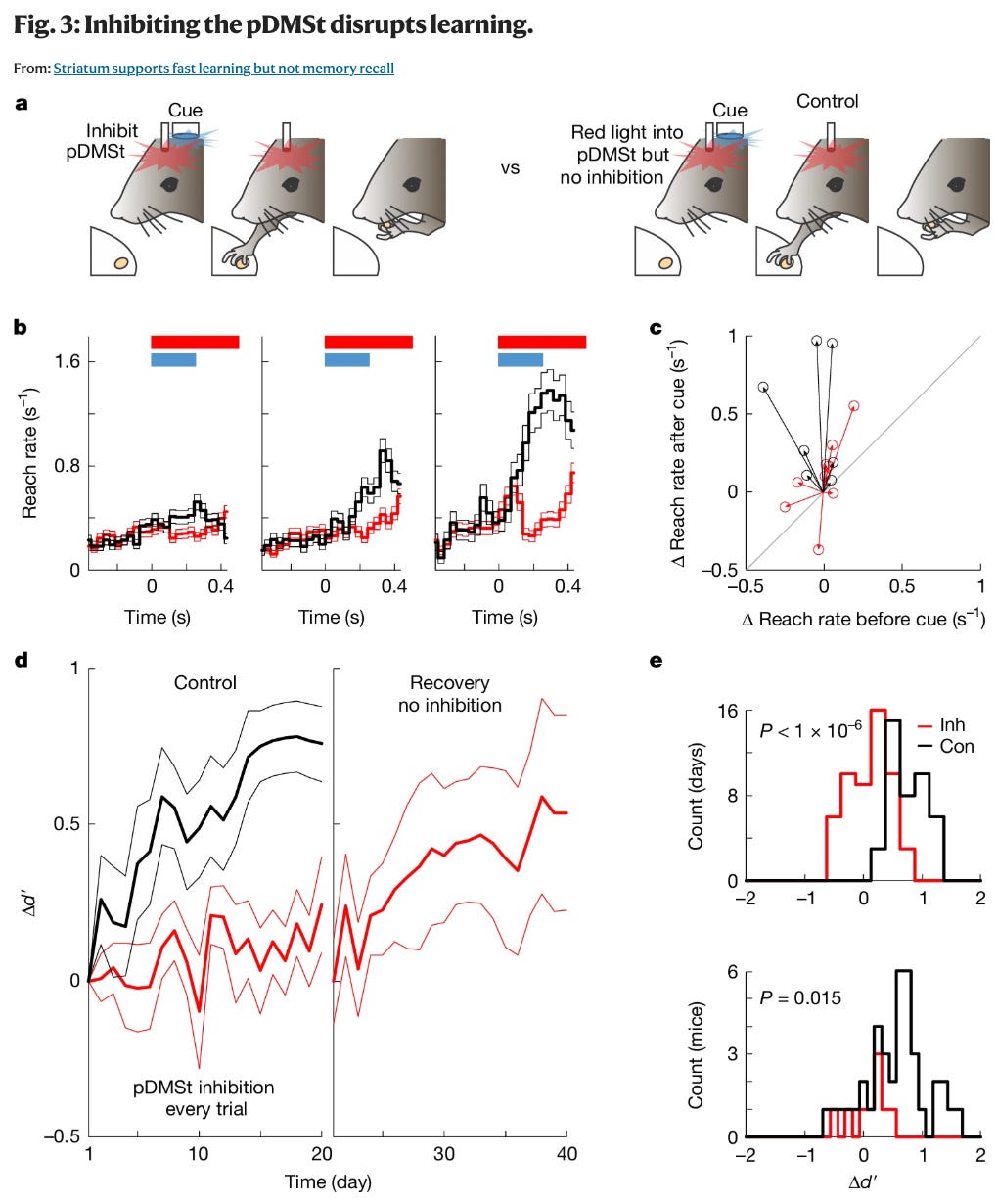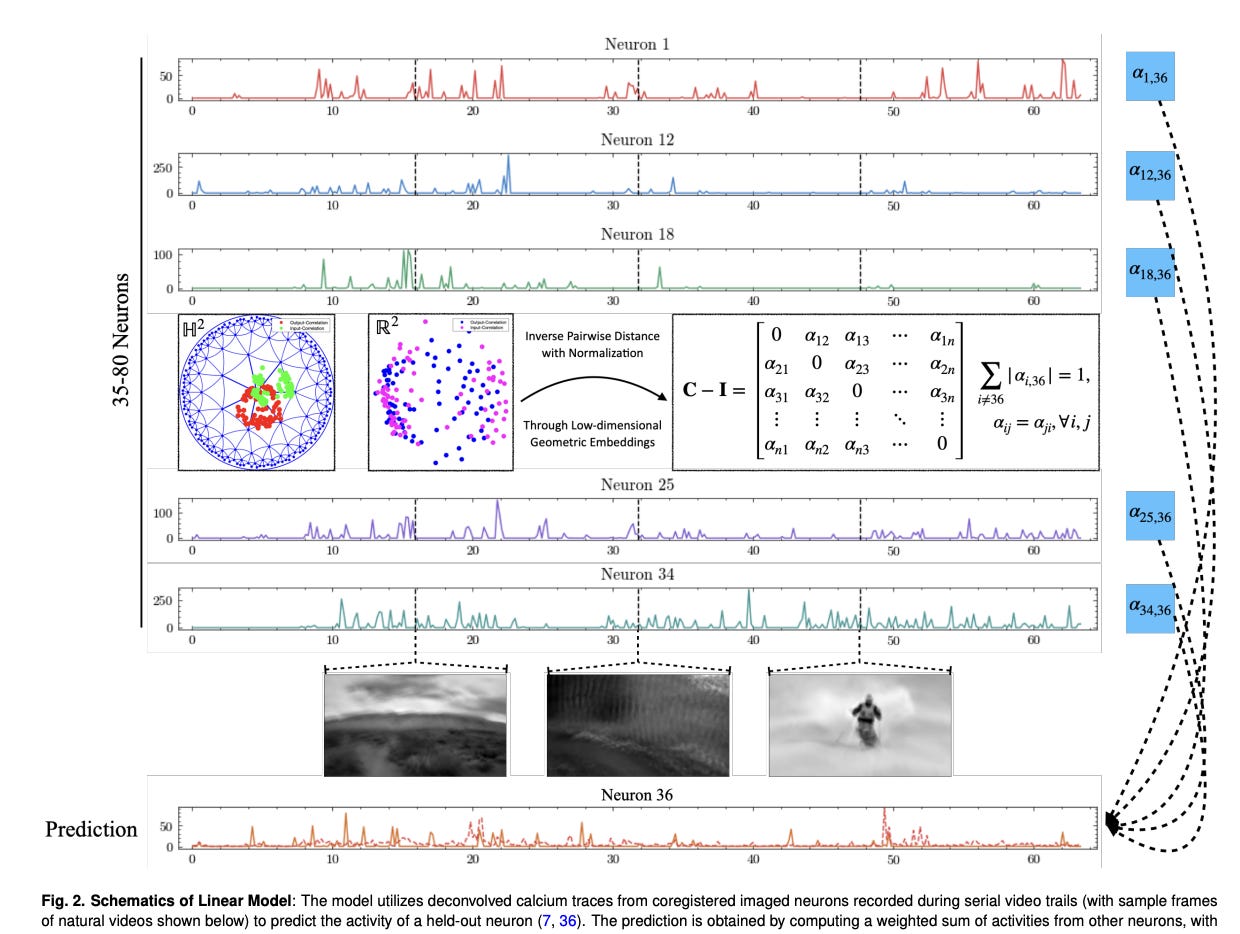1: Progress in connectomics continues apace. Some think that there will be a whole mouse brain connectome within 10 years. In 2023, an influential report from the Wellcome Trust (covered here at NN) estimated that the biggest expense for this would be the extensive requirement for manual proofreading of cellular reconstructions, costing $7-21 billion, by far the biggest component of the expense (e.g. the imaging was estimated to cost $200-300 million, a paltry sum in comparison).
Michał Januszewski has been at Google Research in Zürich working on connectomics since 2015. He was the lead author on a preprint posted this month that proposes a new software method called PATHFINDER. This method is estimated to dramatically reduce the need for manual proofreading, an 84x decrease from the optimistic estimates of the Wellcome Trust report. That would save… a lot of money.
(This publication was obviously a team effort, but I also want to note this from the author contributions section: “MJ developed the PATHFINDER system, applied it to the EM volume, and evaluated and visualized the results.”)
How did they do it? They combined three AI models: (a) a Flood Filling Network that creates supervoxels with very low merge errors, (b) a new model called SENSE that proposes agglomeration candidates, and (c) another new model called SHAPE that evaluates whether or not the proposed neuron shapes are morphologically plausible.
Each model operates at a different spatial scale, progressively building up from small “supervoxels” to complete neurons. The Flood Filling Network works on a tiny 0.5 µm field of view to create high-quality base segments. SENSE then operates at 2-4 µm to identify which segments might belong together. Finally, SHAPE looks at 20 µm regions to evaluate whether proposed combinations actually look like real neurons. Here are some visualizations of how the model works on the preserved mouse cortical tissue that they tested it on:
They focused their analysis on the ability of PATHFINDER to trace axons, which generally have a smaller diameter and greater length than dendrites, making them more difficult to trace. Comparing the segmentations to manual ground truth annotations, they identified two major types of errors: (a) split errors, which is when a single axon is incorrectly broken into multiple separate segments, and (b) merge errors, which is when distinct axons are incorrectly fused together into one segment. Naturally, there is a trade-off between split and merge errors.
They then defined a metric of success, which is the normalized expected run length (nERL). The expected run length measures the average axon length correctly traced from a random starting point, with any segment containing a merge error scoring zero to penalize this type of error. This was normalized to the maximum possible error-free path length in the ground truth annotations. Here’s what they found:
As you can see, the normalized expected run length is much better with PATHFINDER than alternative algorithms. They estimate that this accuracy would dramatically decrease the need for manual proofreading, making the number of proofreaders needed only an order of magnitude higher than was needed for the Drosophila connectome.
When I initially read the Wellcome Trust report, I was naturally bullish, because I like many others have noticed the rapid increase in AI capabilities in recent years, and the proofreading problem seemed solvable with advances in AI. But let’s be clear. “AI” didn’t do this research project. Michał Januszewski and colleagues did. Commendation is due to them for their efforts.
I do have one quibble. It’s not really a critique of this paper in particular, but moreso the whole field, and might simply reflect my own ignorance (although I have tried to research this for awhile). For context, here’s Supplementary Figure 1:
When I look at these types of 2d images, for the most part I cannot clearly tell the difference between axons, dendrites, and astrocytes. I recognize that this might just be a skill issue, and that, although the images shown are in 2d, to actually distinguish structures for the segmentation, annotators have access to the 3d data and need to use it.
However, here is what I would like to know: what is the inter-rater reliability for these ground truth annotations? How sure are we that each of the green-colored structures are axons as opposed to dendrites, or microglia, oligodendrocyte, or astrocyte processes? 95% sure? 99%? 99.9%? I didn’t see any such interrater reliability data for the “ground truth” human annotation, either in this paper or in Shapson-Coe et al 2024. Perhaps this would require something like correlative light and electron microscopy data set to be very sure, but I would at least be reassured by seeing high overlap scores on a subset of the human annotated data.
2: Researchers use optogenetic techniques to study the role of the posterior dorsomedial striatum (pDMSt), which is a brain region that receives visual input. They trained mice to associate an optogenetic cue (light activation of neurons in the visual cortex) with a food reward obtained through forelimb reaching. Surprisingly, while optogenetic inhibition of the posterior dorsomedial striatum completely blocked new learning over weeks of training, it had no effect on recalling already learned associations, even those formed just hours earlier. The authors note that this aspect of memory storage and recall likely occurs elsewhere in the brain. I found these results interesting because I find that the distinction between learning and memory recall is highly under discussed.
3: New study suggests how memories transform from precise, episodic recollections to generalized, “gist” memories over the first few weeks after formation. In particular, they found that newly formed memories activate specific neuronal ensembles only in the original context, but these same neurons become “promiscuously active” (🤔) in similar but distinct contexts over time. This enables generalization. They also find that this phenomenon is dependent on neurogenesis. It’s interesting to think about this process of generalization in the context of psychodynamic psychotherapy.
4: Which network structures best allow the prediction of a neuron’s functional activity? New study analyzes this using matched electrophysiology and connectome data from n = 497 neurons in the MICrONS dataset. They first embed the neurons into a 2D hyperbolic space based on their connectivity patterns, i.e. which neurons they share inputs and outputs with. They chose a hyperbolic space for dimensionality reduction because their analysis and previous studies have suggested that this better matches the brain’s hierarchical, tree-like organization better than flat Euclidean space.

They use a leave-one-out method to predict the electrophysiological activity of a given neuron based on the activity of all of the others, weighted by the similarity of its neural connectivity to those other neurons:
They found that the position of neurons in this 2d hyperbolic embedding space predicts neuronal activity with 68% accuracy, which was surprisingly higher than the 56% accuracy achieved when using the full connectome. This suggests that neurons with similar “connectivity fingerprints” tend to have similar neuronal activity patterns. My guess is that readers of Olaf Sporns’s book “Networks of the Brain” will appreciate this paper.
5: New study uses EEG and measures respiration during two visual categorization tasks in n = 25 humans. They find that respiration seems to modulate brain activity and the encoding of external signals 200-300 milliseconds before behavioral responses. In other words, EEG can help measure how we perceive the world differently based on our respiratory phase. This is a good example of how cognition is embodied.
6: New blog by Ed Boyden, Claire Wang, and Nina Khera. The first post is on what classes one should take to become a neuroengineer. I don’t see what the point of two courses on quantum physics is, but I could be missing something.
7: A study of over 600,000 women veterans found that the prescription of an antidepressant medication (SSRIs, SNRIs, and other types) was associated with a significantly lower risk of developing cardiovascular diseases such as heart disease and stroke over nearly 9 years of follow-up (relative risk: 0.27-0.76).
8: 23andMe has been bought by Regeneron for $256 million, who plans to continue its personal genomics service. Seems like good news for the world, since most of the value from such human genomics data sets is the aggregated scale + phenotype data. Although Regeneron is a reputable company and this seems like a good outcome for 23andMe customers, the whole saga does show a key downside with relying on a for-profit company to survive and remain aligned with the interest of customers over the long term.
9: A study on the renewal of NIH grants finds that a lack of funding interruption is associated with less switching of research topics and more novel findings. The obvious bias is researcher quality, but the study authors did their best to adjust for this. The results are consistent with the idea that scientific innovations often require more than 10 to 20 years of continuous work.
10: In a 24 month follow up of a pilot study (n = 18), wearing a weighted vest for ~10 hrs/day during a 6 month period of diet with calorie restriction seems to help with decreasing weight regain afterwards. This is consistent with a gravitostat model of how the body regulates the resting metabolic rate (RMR). However, I find the idea that the weighted vest provides long-term benefits even when it is no longer used pretty unlikely, so I won’t be convinced until it is replicated with a larger sample size and more statistically reliable differences.
11: Comprehensive study of mixed pathology in post-mortem human brains, with a focus on the medial temporal lobe. They study Alzheimer’s disease neuropathological changes (ADNC), microinfarcts, small vessel disease (SVD), α-synuclein, TDP-43, granulovacuolar degeneration (GVD), argyrophilic grain disease (AGD), and others:
First, they found that many but not all of these pathologies are correlated with one another:
Second, they found that lower neuron counts in the CA1 region of the hippocampus are associated with a higher risk of cognitive impairment:
Third, they found that many of the pathologies were associated with a decreased neuronal density, lower brain weight, and/or clinical dementia rating (CDR):
One basic take-away is that there are number of different types of pathology that the brain can accumulate that have been associated with cognitive impairment. And these are just the relatively common and well-known ways. And we cannot meaningfully reverse the vast majority of them.
12: Study on the genetic correlates of treatment resistant depression in n = 292, 663 participants. Finds that there is a positive association with insomnia (OR = 1.11, 95% CI 1.07-1.15) and specific neuroticism (OR = 1.11, 95% CI 1.07-1.16), and an inverse association with educational attainment (OR = 0.88, 95% CI 0.84-0.91), but they are small effects.
13: Study on cognitive impairment after CAR T cell therapy in mice finds that a key mechanism is an increased reactivity of white matter microglia and a resulting decrease in the number of oligodendrocytes. Also finds that microglial depletion rescues the cognitive dysfunction, even if started a few weeks after CAR T.
14: Article on laws and regulations related to brain banking in Italy. We learn that in Italy, legal death pronouncement requires either (a) “observation of consecutive abiotic signs, over a period of 15- and 30-h post-mortem” or (b) demonstration of a flat EKG for 20 consecutive minutes, which is called “thanatography”. The situation in Italy for brain banking seems to be complex. The authors note the importance of developing brain donation-specific regulations, because it deteriorates much faster than most of the rest of the body, so it is critical that the brain banking procedures can be performed rapidly.
15: New results on dielectric warming of kidneys and ovaries cryopreserved via vitrification, by Brian Wowk and colleagues. Reports that they reversibly preserved three rabbit kidneys in this manner and that one survived long-term with return to normal function in a recipient that was still alive 17 months after. They noted that this kidney was 13.9 g, which is the largest vitrified vital organ that has ever been shown to return to normal clinical function, by an order of magnitude.
16: Ariel Zeleznikow-Johnston has a summary of the Vitalist Bay Biostasis Week, which I attended and found to be fantastic. Thanks so much to the organizers for putting it on. I will add to Ariel’s comments that Ralph Merkle and Max More both had excellent talks and comments on the talks of others. To me the most encouraging thing was to see the wonderful new entrants in the field over the past several years — you know who you are! I would personally love it if more people joined the field of structural preservation in the coming years. I am still learning myself, but I will offer to help mentor you if you are a researcher or communicator looking to join or switch to this field, even if part-time.














"I am still learning myself, but I will offer to help mentor you if you are a researcher or communicator looking to join or switch to this field, even if part-time."
I cannot recommend Andy enough - I've learnt a huge amount from reading his review papers, coauthoring studies with him, and generally talking to him over the past few years. If you're considering asking him for mentorship, also know he's a patient and generous guy and you should take him up on this offer!
"what is the inter-rater reliability for these ground truth annotations? How sure are we that each of the green-colored structures are axons as opposed to dendrites, or microglia, oligodendrocyte, or astrocyte processes?" Andy, if you get a decent answer to this, please write about it. I would be very interested.